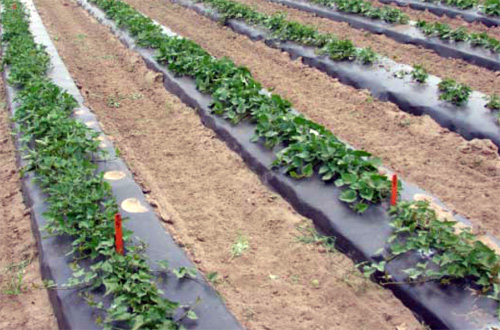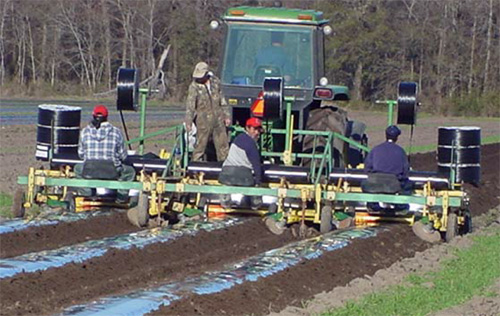Is plasticulture worth it for vegetable production?
Bare ground versus raised, plastic-mulched, drip irrigated beds - is one better than the other? Is plasticulture worth the extra initial and annual expense? Are yields really that much better to justify the additional cost and effort?
Historically vegetables have been grown on bare ground with only minimal alterations. Some ancient cultures developed raised beds and extensive irrigation systems but plants were still grown in bare ground. That changed in the 1960s with the advent of modern plastics. Today many vegetables are produced using raised, plastic-mulched beds with drip irrigation – plasticulture (Figure 1). Many growers have made the switch while others continue with bare ground.
|
Plasticulture advantages and the process can be found in MSU Extension bulletin E2980: Plasticulture for Michigan Vegetable Production. Even with advantages, plasticulture is not suitable for all vegetable crops, especially those planted at high densities or mechanically harvested. High density crops create too many holes in the plastic for it to be effective and it may tear in the wind. Plastic is burdensome to remove for mechanically harvested crops like processing tomatoes and potatoes. Plasticulture also makes it impossible for potato growers to hill the plants.
Then there are crops of questionable economics such as pickles and sweet corn, however, some growers of both do use plastic. Plastic-grown sweet corn will be significantly ahead of bare ground sweet corn planted at the same time, especially if transplants and low tunnels are also used. It is good marketing to have the earliest sweet corn since once customers come to you, they may not switch to others, even if their price is lower.
Plasticulture requires a properly sized tractor, usually a four-wheel drive for extra traction and weight. Rear-drive tractors are suitable but will need to have more horsepower to carry the weight of the bed shaper and minimize tire slippage when shaping the beds. You will need a bed shaper and drip tape inserter (Figure 2). You will also need the plumbing, filters and connections between your water source and the drip tape. Tape and plastic mulch are the only components replaced annually, the rest are useable over several years.
|
Most operations already have suitable tractors to handle a 1-row bed shaper. Depending on topography, soil type and the bed shaper it will take about a 55 horsepower four-wheel drive or a 75 horsepower two-wheel drive tractor to pull the bed shaper. Pre-shaping beds ahead of the bed shaper may reduce required horsepower. A one-row bed shaper costs $3,000 to $5,000 new or $2,000 or less used. Drip systems can be attached to existing wells and range in price depending on size and water source (surface sources will require more filtration). Plastic and drip tape will cost around $400 an acre plus labor to apply.
So, if you have been considering moving to a plasticulture system, this winter would be a good time to do some investigating. You may want to purchase the NRAES Plasticulture Production Manual as part of your research. Some growers may think their acreage is too small. If that’s you, then see if there are others in your area you could cooperate with for equipment and supply purchases.



 Print
Print Email
Email
 Figure 2. Three-row bed shaper – plastic layer that also inserts a drip tape.
Figure 2. Three-row bed shaper – plastic layer that also inserts a drip tape.

